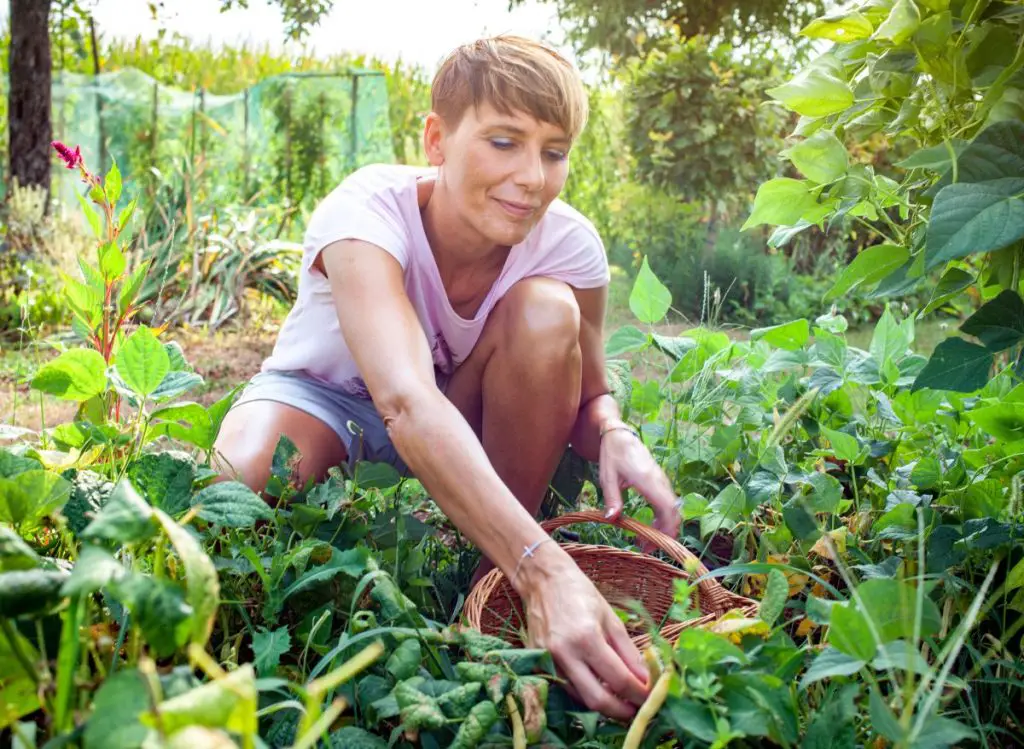
The practice of companion planting has been around for centuries and is a natural symbiotic relationship between two or more plants. The earliest record of successful companion planting is known today as the Three Sisters Garden Method.
The Three Sisters Garden Method is the trio of beans, corn, and squash planted together to provide mutual benefits. The corn stalks give the beans a sturdy trellis, the large squash leaves shade the shallow corn roots, and the beans fix nitrogen into the soil and keep the corn stalks anchored into the soil.
Some of the best companion plants for bush beans are probably some of your favorite garden vegetables, like corn, squash, and beets.
Read on to discover many other companion plants for bush beans and how these plants grow better together and improve garden production.
If you are wondering whether Bush Beans Need a Trellis or Not, I wrote a whole article that I encourage you to read.
What Are Bush Beans?
Bush beans are categorized by the plant on which they grow. The plants will be 1-5 feet tall and will not need to be supported to keep them growing in an upright position. Moreover, bush beans are ideal for growing in small gardens or container gardens. They are often favored by gardeners that are planning on preserving the bean harvest because all the beans ripen at the same time.
Green beans, kidney, pinto, black, and broad beans come in a bush variety. Other members of the legume family, like peas and lentils, also come in bush varieties.
Fix Nitrogen:
Bush beans ‘fix’ nitrogen into the soil, meaning they add a substantial amount of nitrogen to the soil. Strains of bacteria (rhizobia) live in the soil and infect the roots of the bean plants. The roots naturally form a growth, called a nodule, around the bacteria, and a transformation occurs inside the nodule.
The bacteria convert atmospheric nitrogen into usable plant compounds and keep the compounds stored inside the nodules until the bush has completed its lifecycle and dies. After the bush dies, the stored nitrogen is released into the soil as the plant decomposes.
Nitrogen is vital to the photosynthesis process, so all garden plants will benefit from having bush beans as their companion plant.
Now let’s find out which plants make the best companions for bush beans.
If you are growing Pole Beans and looking for ways to make them thrive, I encourage you to read this article where I shared the 9 Best tips to make your Pole Beans thrive!
Best Companions For Bush Beans
Like people, bush beans (Phaseolus vulgaris) draw strength from the neighborly support of bean companion plants.
Many plants generally depend on the company of other plants for growing conditions and the nutrients to thrive.
Here are the best companions for bush beans:
1- Beets (Beta vulgaris)
Beets develop flat, dense leaves that will act as a living mulch for bush bean plants. The leaves will shade the soil so the weed seeds lying dormant within the soil can not germinate. The shade from the beet leaves will also help the soil retain moisture and keep the soil cooler.
The beet leaves are edible and highly nutritious, but if you don’t eat them, add them to the compost pile because they are a rich source of magnesium.
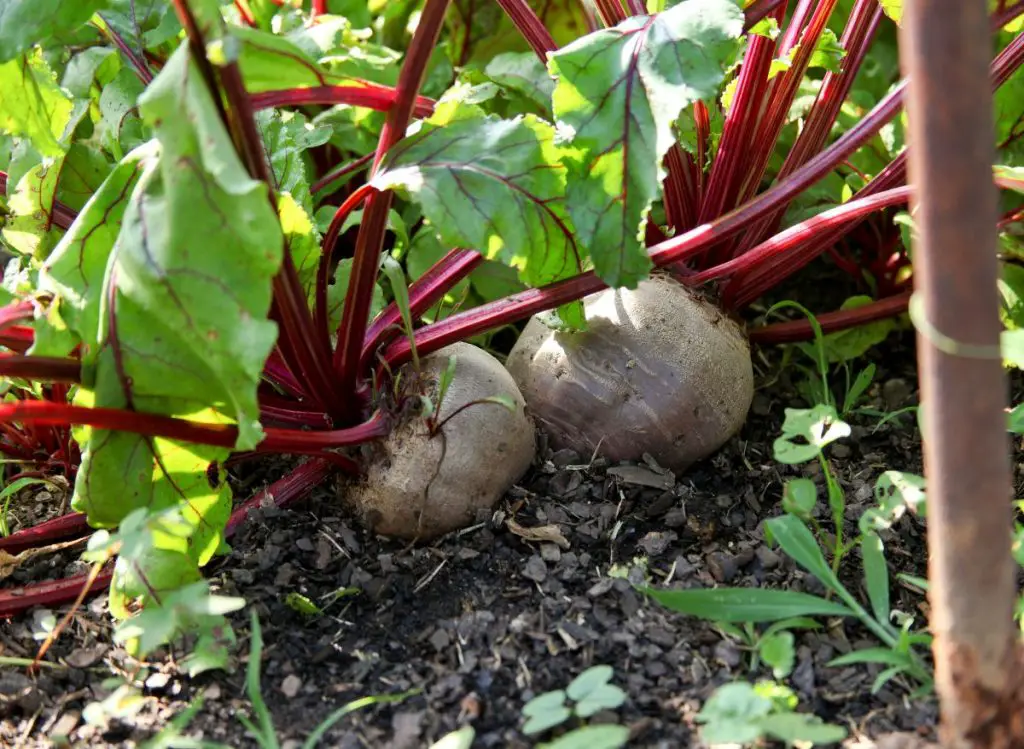
2- Celery (Apium graveolens)
Celery repels bean beetles and will help keep the bush bean plant pest-free. Celery also takes up minimal garden space since it’s an upright-growing plant and makes an ideal companion to bush beans.
Tuck celery in-between bush bean plants so the celery will be shaded from the hot afternoon sun by the taller-growing bush bean plants.
Both the beans and celery require plenty of water, so no water will be wasted when these two vegetables are planted close to one another.
3- Cucumbers (Cucumis sativus)
Cucumbers thrive in the same growing environments as bush beans. The cucumbers will also produce more in the nitrogen-rich soil that beans provide.
The large yellow cucumber blooms are very noticeable to passing pollinators, and they are filled with pollen.
The increased number of pollinators will also visit the smaller, less noticeable bush bean blooms while they are in the garden. More pollination means a bigger harvest of beans and other garden vegetables.
4- Carrots (Daucus carota)
This root vegetable will help keep the soil from compacting so the bean roots can grow deep. Carrots also attract garden-benefiting ladybugs, which eat aphids before they can suck the sap from the new growth on the bean plants.
The beans improve the soil, so the carrots are able to grow bigger.
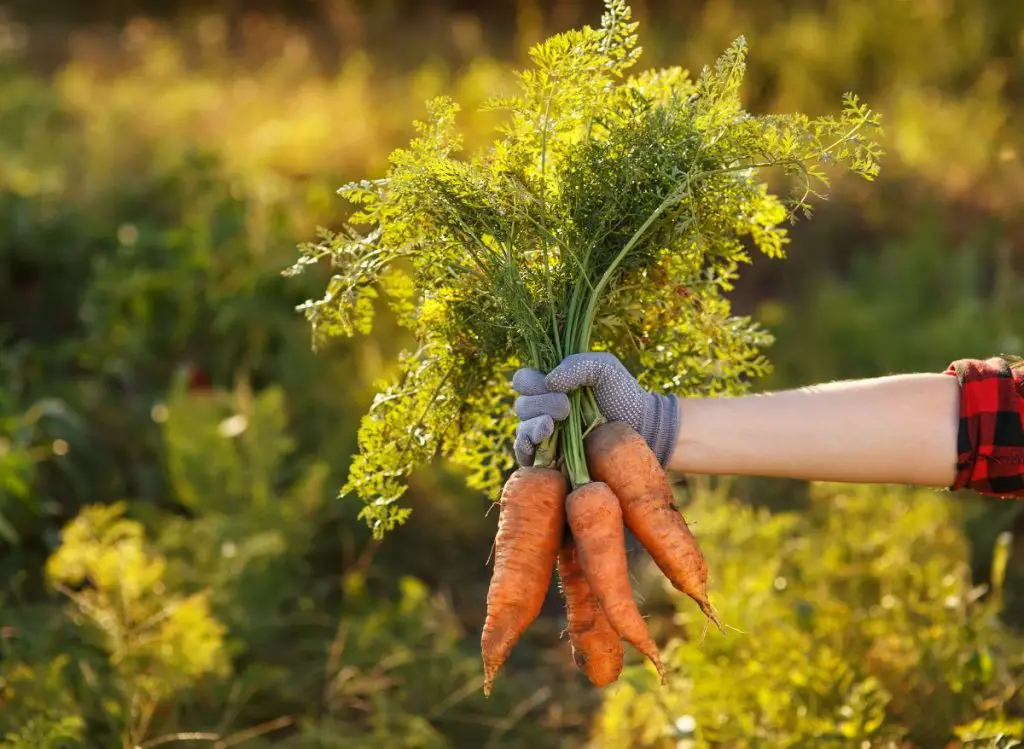
5- Catnip (Nepeta cataria)
Both cats and beans love this plant. Catnip repels flea beetles, so they won’t damage your bean crop.
In addition, catnip is also a pretty plant that will produce spikes of purple flowers that attract pollinators to your garden.
6- Marigolds (Tagetes)
Most people are familiar with marigolds; they are easy to care for and a drought-tolerant flower that blooms throughout the summer. They also make one of the best companions for bush beans.
Marigolds repel a wide array of pests that love to feast on bush beans and other garden vegetables. Marigolds repel Mexican bean beetles, aphids, mosquitoes, cabbage worms, and nematodes.
The scent of marigolds also helps keep cats, dogs, deer, and other small animals out of your garden. Plant these attractive flowers around the perimeter of your bush bean patch.
7- Nasturtiums (Tropaeolum)
These colorful flowers thrive on neglect, so you can plant them and forget about them during the summer. They are edible and add a pop of color in salads or when used as a plate garnish.
Nasturtiums repel bean beetles and add nitrogen to the garden soil. The increased nitrogen improves the growth and production of bush beans.
8- Oregano (Origanum vulgare)
This fragrant herb plant will repel aphids, mosquitoes, and small animals away from the garden. Oregano is a natural insect repellent and will benefit your entire garden.
In addition, the herb can be harvested and used fresh or dried in many recipes.
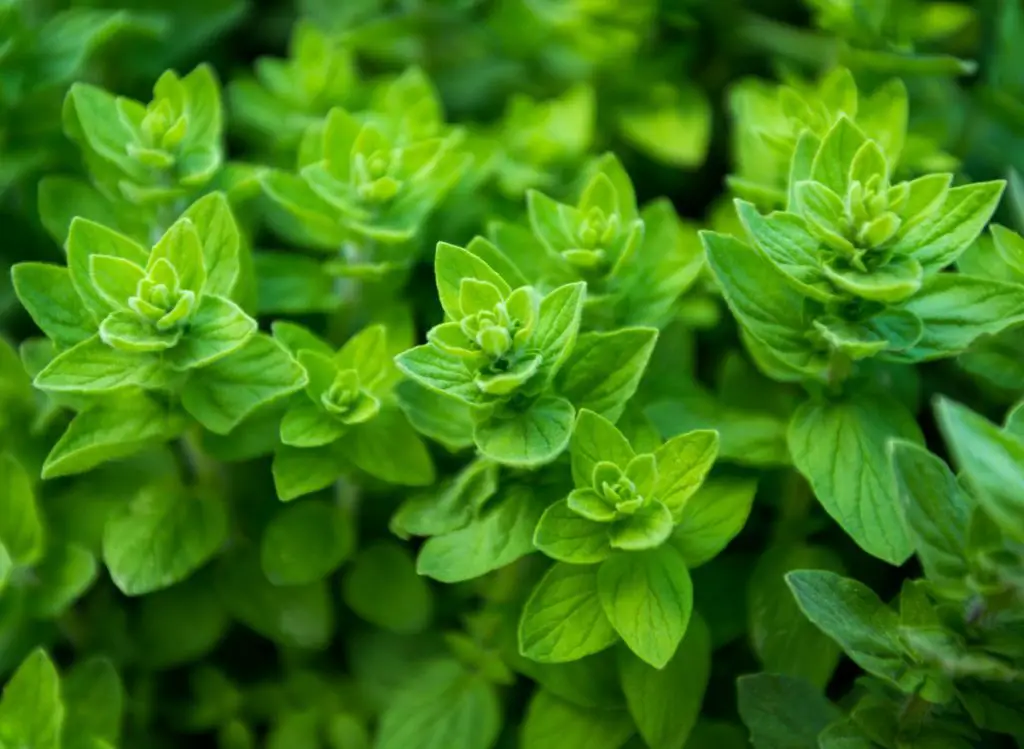
9- Potatoes (Solanum tuberosum)
Bush beans thrive when grown alongside potatoes. The bean plants will shade the soil and maintain it moist as potato plants continue to grow.
At the same time, potatoes benefit from the nitrogen released by bush bean plants in the soil; therefore, your chances of harvesting larger and better-tasting potatoes are higher when grown near bean plants.
Furthermore, potatoes repel Mexican bean beetles (Source: University of Arizona), and bush beans repel the Colorado potato beetle. These mutual benefits are what companion planting is all about.
Each plant helps the other plant to grow, develop, and produce efficiently and abundantly.
10- Radish (Raphanus sativus)
These small root vegetables produce both edible roots and top greenery that are packed with nutrition. Radishes are ready to harvest 30 days after planting the seeds and make some of the best companions for bush beans.
Radishes take up very little space and can be grown in partial shade; this makes them ideal for planting in between the bush bean plants. The bean plant roots will not be disturbed when the shallow-growing radish bulb is harvested.
The scent of radishes repels a wide array of garden pests to help keep the bean bushes pest-free.
11- Rosemary (Salvia rosmarinus)
This popular herb is fragrant and pretty and helps keep the bean beetles off of your bush bean plant.
Flies, mosquitoes, and cabbage moths hate the scent of rosemary and will leave your garden (and you) alone when it’s planted nearby.
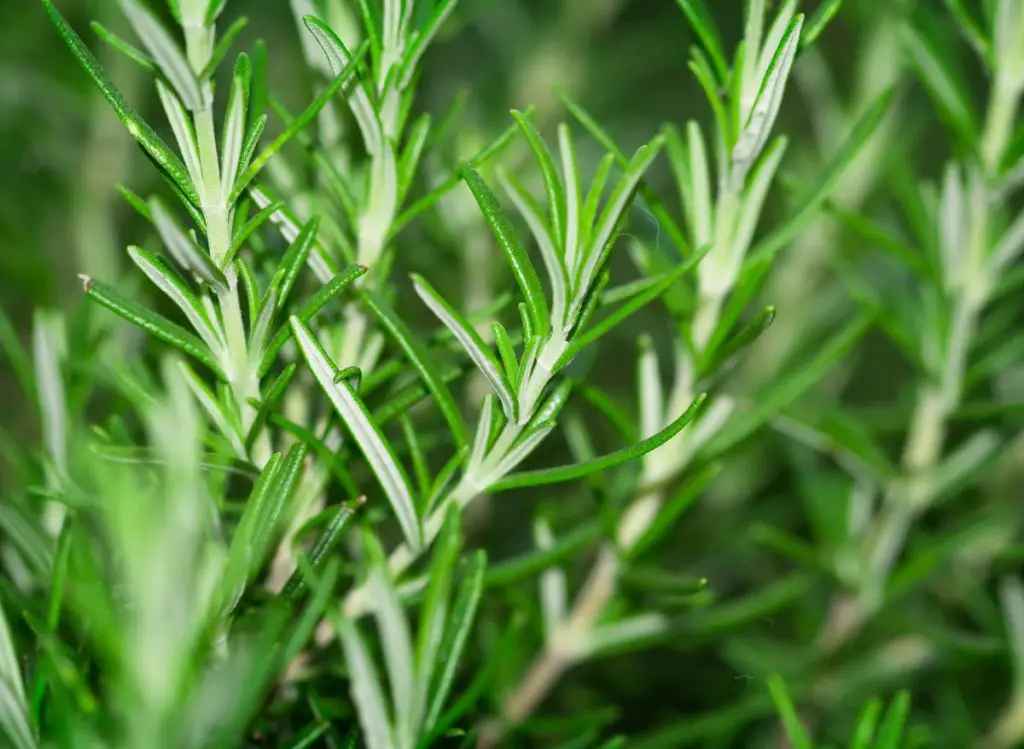
12- Strawberries (Fragaria × ananassa)
These low-growing fruiting plants grow happily when planted with bush beans. The creeping strawberry plants help reduce weed growth and do not interfere with the growth of the bushes.
The bushes provide the strawberry plants with a little shade and soil that is rich in nitrogen.
You might also enjoy reading: How To Keep Ants Off Strawberry Plants: Here’s How To Do It
13- Spinach (Spinacia oleracea)
Beans provide a lot of benefits to spinach and other members of the brassicas family. The bushes provide a little shade to the heat-intolerant spinach plants so they will produce long after the temperature warms in early summer.
The extra nitrogen provides by the bean plants also increases the size and production of the spinach leaves.
Spinach attracts very few pests and makes good companion plants for bush beans. Spinach is a cool-season crop and can be planted in the early spring and again in late summer.
14- Savory (Satureja)
Summer savory is one of the best bush bean companion plants. I suggest you plant it around the base of the bean plant but not very close to help provide it with sufficient light.
What makes summer savory an excellent companion for bush beans is that it helps promote bean pod production, enhance the beans’ flavor, and help prevent pests, including Mexican bean beetles.
15- Swiss Chard (Beta vulgaris subsp. vulgaris)
Swiss chard enjoys the extra stocks of nitrogen provided by the presence of bush beans.
And in exchange for nitrogen supplied by bush beans, Swiss chard acts as a pest controller by breaking up monocrops, which makes it harder for bean pests to access your bush beans.
If you are interested in growing bush beans, I wrote a whole article discussing the 15 Companion Plants For Swiss Chard, including plants to avoid.
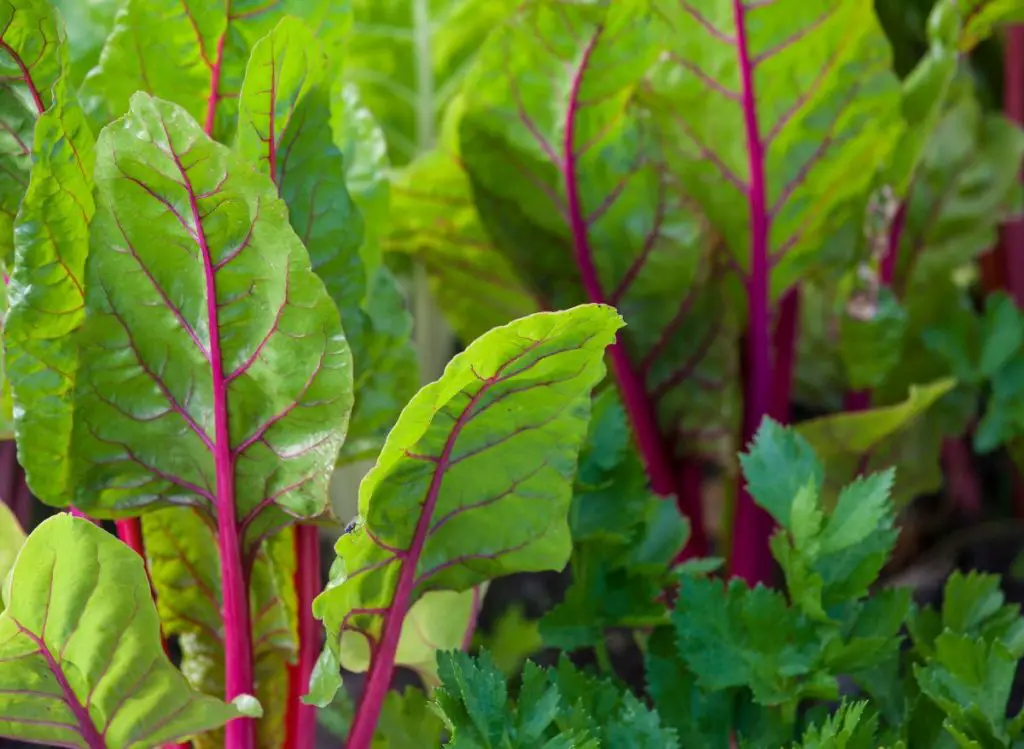
16- Corn (Zea mays)
Bush beans can generally tolerate the light shade that corn plants cast. And since bean plants’ roots occupy a different level in the soil than corn’s roots, the two plants do not typically compete for water and nutrients.
Bush beans fix nitrogen in the soil for corn to absorb, mainly when corn follows beans in succession.
17- Broccoli (Brassica oleracea italica)
Broccoli is an excellent companion to bush beans. In addition, broccoli is a cabbage family member, along with Brussels sprouts, cauliflower, and collard greens.
It is a great plant to grow because it is one of the healthiest and most nutritious vegetables and is relatively easy to maintain.
What To Avoid Planting With Bush Beans
There are a few plants you should avoid planting with bush beans as they slow or prevent the growth of beans when grown together.
1- Onions (Allium cepa)
Onions and other allium family members produce a natural chemical that kills beneficial bacteria on bean roots, interfering with bean plant growth and stopping beans from fixing nitrogen in the soil.
2- Sunflowers (Helianthus)
Some gardeners consider sunflowers the fourth companion “sister” to their three sisters’ garden. Similar to corn, sunflowers provide natural support to beans.
However, sunflowers also release a natural chemical that inhibits the growth of bean plants, making them one of the worst companions for bush beans.
3- Peppers (Capsicum)
While planting peppers and bush beans benefit the soil, these two plants might do well when planted together. One of the reasons is that the aggressive growth of bush bean plants might lead to choking out pepper plants.

